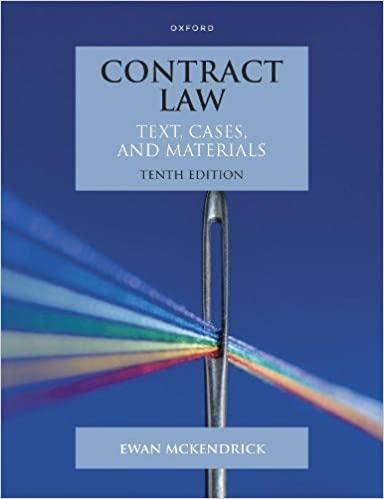Question
ONE QUESTION ONLY: What have you learned from Agrarian reform until taxation in the Philippines? __________________________________________________________________________________________ AGRARIAN REFORM AND TAXATION COMPREHENSIVE AGRARIAN REFORM PROGRAM Comprehensive
ONE QUESTION ONLY:
What have you learned from Agrarian reform until taxation in the Philippines?
__________________________________________________________________________________________
AGRARIAN REFORM AND TAXATION
COMPREHENSIVE AGRARIAN REFORM PROGRAM
Comprehensive Agrarian Reform Law (R.A. No. 6657) approved in June 10, 1988.
- an act instituting a comprehensive agrarian reform program to promote social justice and industrialization, providing the mechanism for its implementation and for other purposes.
Under R.A. 6657, a program of acquisition and distribution of all agricultural lands through a period of ten years from the effectivity of the law, was formulated. The program is referred to as the Comprehensive Agrarian Reform Program (CARP) is implemented in three phrases.
Phase I ( 1988-1992)
a. Rice and Corn lands covered by P.D. No. 27;
b. All idle or abandoned lands;
c. All private lands voluntarily offered by owners for agrarian reform;
d. All lands foreclosed by government financial institutions;
e. All lands acquired by the Presidential Commission on Good Government;
f. Lands operated by multinational conies &
g. All other lands owned by the gov't devoted to or suitable for agricultural purposes.
Phase II (1988 - 1992)
a. All alienable and disposable public agricultural lands;
b. All arable public agricultural lands under agriforest, pasture and agricultural leases already cultivated and planted to crops in accordance with sec. 6, Art. VIII, 1987 Cons.
c. All public lands which are to be opened for new dev't and resetlement, and
d. All private agricultural lands excess of fifty hectares.
Phase III
a. Landholdings above twenty four hectares up to fifty hectares (1992-1995)
b. Landholdings with the areas between 5.1 and twenty four hectares (1994-1998)
TAXATION
refers to the act of collecting taxes. This power is vested in the government, whether local or national. Taxes are compulsory payments associated with income, consumption or holding of property that individuals and corporations are required to make each year to governments.
The need of Taxation
The government serves to promote the general were and protection of its citizens. The following functions:
- Education
- Defense
- Social Welfare
- Food Production
- Protection of the Environment
People fails to pay taxes:
- Viability of the government is placed jeopardy.
- The services will not be sustained.
This is important that people should share the burden of running the government, and this can be achieved through the regular payment of taxes.
Requisites for valid Taxation
- Tax should be for public purpose;
- Rule of taxation shall be uniform;
- The person or property taxed shall be within the jurisdiction of the government;
- The assessment and collection of certain kinds of taxes must be provide guarantees against injustices to individuals.
OBJECTIVES OF TAXATION
- To raise funds
- To redistribute wealth
- To regulate consumption
- To protect local industries.
CLASSES OF TAXES
- Subject
- Purpose
- Authority imposing the tax
- Determination of Amount
- Who bears the burden
- Graduation Rate
As to subject, classifications:
- Personal Tax: imposed to individual residing within the specified territory, regardless of property or occupation.
- Property tax: levied on the property.
- Excise tax: laid upon goods consumed, sold or manufactured.
According to purpose:
-Revenue tax: imposed to collect revenues for the general purposes of the government. Ex. Income Tax and Sales Tax.
-Regulatory Tax: imposed on special purpose like the protection of local industries from foreign corporation.
According to authority imposing Tax:
-National Tax: imposed by national government. Ex. income tax and custom duties.
-Local Tax: levied by the municipal, provincial or barangay governments. Ex. is the real property tax.
According to Determination of Amount
Specific tax is one assessed on the basis of a tax per year while Ad Valorem is when assessment is based on the percentage of the value of the item.
According to who bears the Burden
Direct tax when a person on whom the tax is imposed absorbs the burden like income tax while Indirect tax is the amount paid by the other person other than one whom is legally imposed. Ex. Vat
According to Graduation Rate
Proportional if base on the fixed percentage of the amount of property, income and other factors. Ex Sales & Real Property Tax. Progressive when the rate increase as the tax based is increase. Ex. Income Tax. Regressive the effective rate decreases as the tax base is decreased.
REQUISITES FOR IDEAL TAX SYSTEM
1. Ideal - must be adequate to raise money to support the gov't.
2. Equitable - system should be perceived as fair.
3. Economically Efficient - should support the economic growth.
4. Simple - rather than be impediment to investment and barriers for dev't.
Step by Step Solution
There are 3 Steps involved in it
Step: 1

Get Instant Access to Expert-Tailored Solutions
See step-by-step solutions with expert insights and AI powered tools for academic success
Step: 2

Step: 3

Ace Your Homework with AI
Get the answers you need in no time with our AI-driven, step-by-step assistance
Get Started


